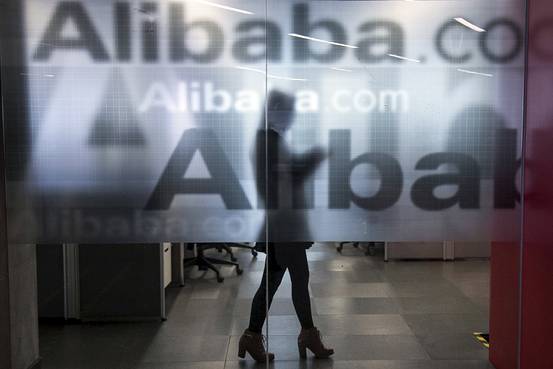Top Stories
How will India be a part of the Asian century?
Author: Shekhar Shah, NCAER
The 19th century was thought of as belonging to Britain and the 20th century to America. Many now believe that the 21st century will be Asia’s.
The sheer market size and growth potential of China and India place them at the centre of the Asian century. Over the past 20 years, these two countries have almost tripled their share of the global economy. When adjusted for purchasing power parity, the Indian economy is now roughly the same size as Japan’s. One Goldman Sachs estimate suggests that India’s economy will surpass the US economy by 2043. For long the world’s second-largest country, India’s population is expected to pass China’s in less than two decades.
Despite all this, India is likely to remain a lower middle-income country well into the Asian century, lagging behind its BRICS counterparts. India has the world’s largest concentration of poor people: in 2010, more than 840 million Indians lived on less than $2 a day, and 400 million on less than $1.25 a day. By the time India becomes the most-populated country in the world, its already large challenges relating to urbanisation and the provision of adequate infrastructure, jobs, drinking water, and food for its citizens will be immense. India’s size and its rising middle-class power may have led many to rightly highlight its role in powering the Asian century, but, ironically, it is less clear how India’s own poor people will be empowered to rise out of poverty.
This raises a number of questions. Located in the right place at the right time, how can India thrive in this Asian century? What opportunities will Asia’s rise offer India? What opportunities will India’s rise offer Asia? Most importantly for the average Indian, how will the shift of economic and strategic power to Asia shape the massive economic and social transformation underway in the world’s largest democracy? Already a lower middle-income country, how can India avoid the middle-income trap? More immediately, how can India regain the growth momentum it had generated in the mid-2000s, address its rapidly growing fiscal pressures, and reduce the unprecedented fragility of its current account deficit?
These are large and complex questions. It is important to ask them now because in a very real sense the world’s expectations of India perhaps exceed India’s expectations of itself. India’s failure to address these questions will have far-reaching consequences, giving rise to a greater gulf between India’s potential and its achievements, and making it that much harder for India to catch up with the rest of a rapidly rising Asia. Much will depend on the far-sighted leadership that Indian leaders do or do not provide in designing, implementing and evaluating the right policy frameworks to achieve the goal of ‘faster, sustainable, more inclusive growth’ that the Indian government’s 12th Five Year Plan (2012–17) has set for itself.
Three scenarios are worth considering. The first, and most favourable is a win–win situation in which India gains greatly from the rise of Asia, much as India’s market size contributes to the Asian century. India successfully leverages its demographics and its trade and cultural proximity to Asia’s economic centres to transform its workforce and its manufacturing and service sectors into a highly competitive, connected and innovative force through sound public policies, and investments in education, skills and infrastructure. In the second, less-welcome, scenario India muddles through. It meets some of the expectations of India’s role in the Asian century but does not gain ground relative to other Asian countries and perhaps falls further behind. The third and least-desirable scenario sees the Asian century largely bypass India. Given the commercial, political and strategic relationships that India already has with the rest of Asia, this scenario is hopefully also the least likely. But the very fact that it is unlikely could breed domestic complacency and keep India from gaining fully from the Asian century.
What will it take for India to make the first scenario a reality? Analysts have identified seven domestic pillars that aided the early and rapid transformation of Asia’s newly industrialising economies: policies that supported free markets, science and technology, meritocracy, pragmatism, a culture of peace, rule of law and education. These pillars will require further refinement, as India will also have to address newer domestic challenges, including global warming, the provision of clean energy and water to its citizens, and the threat of corruption and public ineffectiveness, which appears to have worsened in recent years.
On the external front, India’s trade and investment relations with Asia will play a major role, not just within Asia but also in its relationships with North American, European and African markets. India has already signed nearly 20 regional trade agreements and is currently negotiating several more. As hopes dim for a successful multilateral trading regime, India must expend its energies not just in signing bilateral agreements but also in helping to bring about an FTA in groups such as the ASEAN+6 or the Regional Comprehensive Economic Partnership arrangement.
To enhance public awareness of the immense advantages and significant risks that India will face in the Asian century, India’s National Council of Applied Economic Research in New Delhi (NCAER) is exploring a multi-year research program on India in the Asian century. The research program will focus on identifying opportunities in the short, medium and long term to increase the economic and other net benefits to India from the global economic and strategic shift to Asia. Short-term actions are those that India could take in the next five years, and medium- and long-term actions are those that could be implemented before 2025. An important part of this project would be to foster joint work with Asian partner institutions. If India is not to miss the boat in the Asian century, there is much work to be done.
Shekhar Shah is Director-General of the National Council of Applied Economic Research (NCAER), New Delhi. He is grateful to Dr Rajesh Chadha, Senior Fellow at NCAER, for the many useful discussions on the topic.
See the rest here:
How will India be a part of the Asian century?
China
China dominates Asian Economies
China, world’s second-largest economy stands tall with US$ 25.3 trillion and is up by 9% from 2017 followed by India at 10.38 trillion which is up by 9.8% showing growth over the preceding year.

China, world’s second-largest economy stands tall with US$ 25.3 trillion and is up by 9% from 2017 followed by India at 10.38 trillion which is up by 9.8% showing growth over the preceding year.
(more…)China
New Chinese regulation will require approval for foreign firms to publish online
A new Chinese regulation announced this week will require foreign companies and foreign-Chinese joint ventures to acquire approval before publishing content online, in the government’s latest move to tighten control of the digital realm.

A new Chinese regulation announced this week will require foreign companies and foreign-Chinese joint ventures to acquire approval before publishing content online, in the government’s latest move to tighten control of the digital realm. (more…)
China
What Alibaba Can Learn From Groupon


An employee is seen behind a glass wall with the logo of Alibaba at the company’s headquarters on the outskirts of Hangzhou, Zhejiang province, in this April 23, 2014 file photo.
Amid the spa discounts, restaurant deals and cut-price tickets on Groupon, Alibaba should be looking for one thing: lessons learned. As WSJ’s Alex Frangos writes:
The Chinese e-commerce giant on Friday disclosed a 5.6% stake in the once-popular, but lately shunned, daily-deals company. Groupon’s shares rose 41% Tuesday, on top of a nearly 30% rise Friday after a positive earnings surprise.
Groupon, which famously spurned a $6 billion takeover offer from Google, has become the poster child for fallen-from-favor tech companies. It had expanded too quickly on a business model that proved harder to execute in reality than in concept. Coupons, it turns out, don’t breed loyal customers. They attract cheapskates.
Advertisement
That may be what drew in Alibaba. Last week, Groupon’s stock was at its lowest level ever, the company’s market capitalization down to just $1.3 billion—from $16 billion after its 2012 initial public offering.
Alibaba says it wants to “exchange experiences” with Groupon. It has its own venture in the so-called online-to-offline space, Koubei, which Alibaba and affiliate Ant Financial last year committed to pour $1 billion into. Koubei is in a mounting dogfight with rivals Meituan-Dianping, backed by Alibaba rival Tencent, and Baidu’s Nuomi, to dominate coupons, discounts, online ticketing and the like.
Read the full column on WSJ.com.
Sign up for…
The investor looking to put money into China and Asian Markets ought to definitely contemplate the mutual funds supplied by various household of funds. Almost all of the massive fund firms have a fund that’s designed for exposure to the expansion in China.














